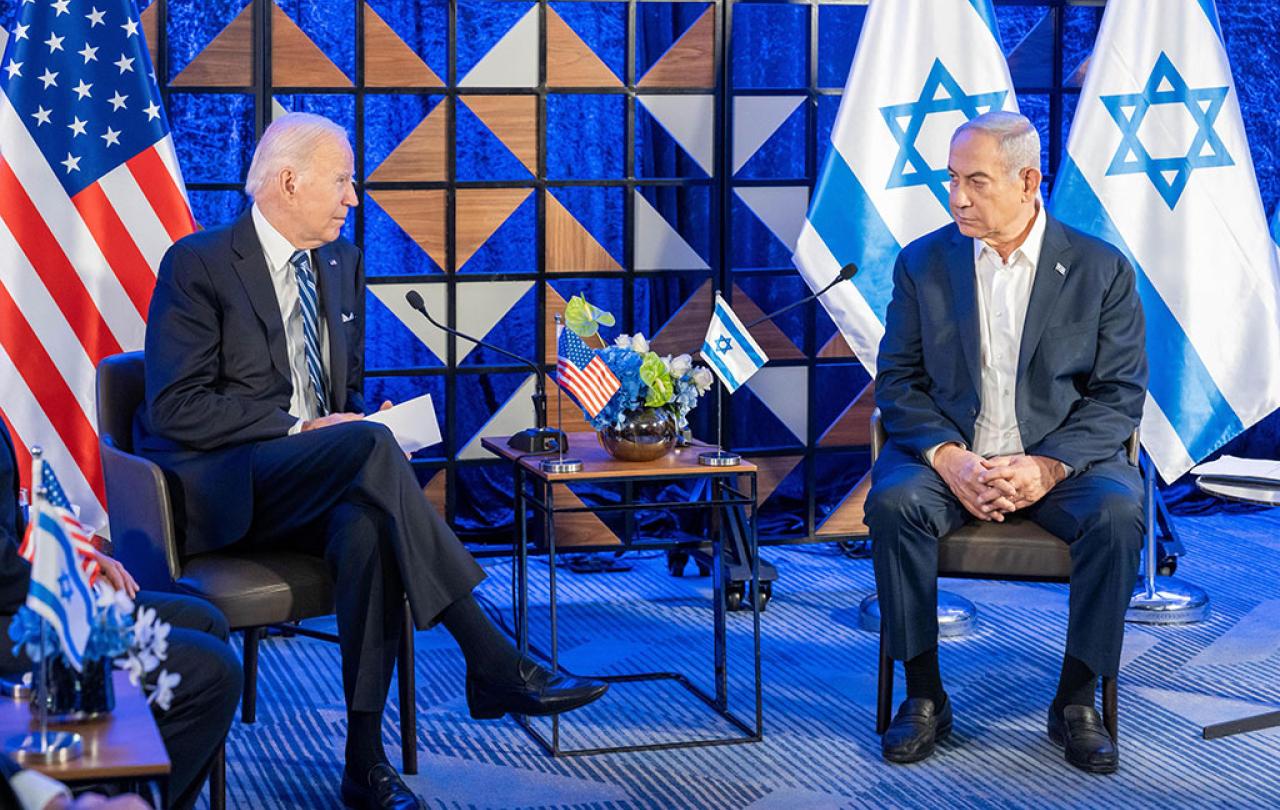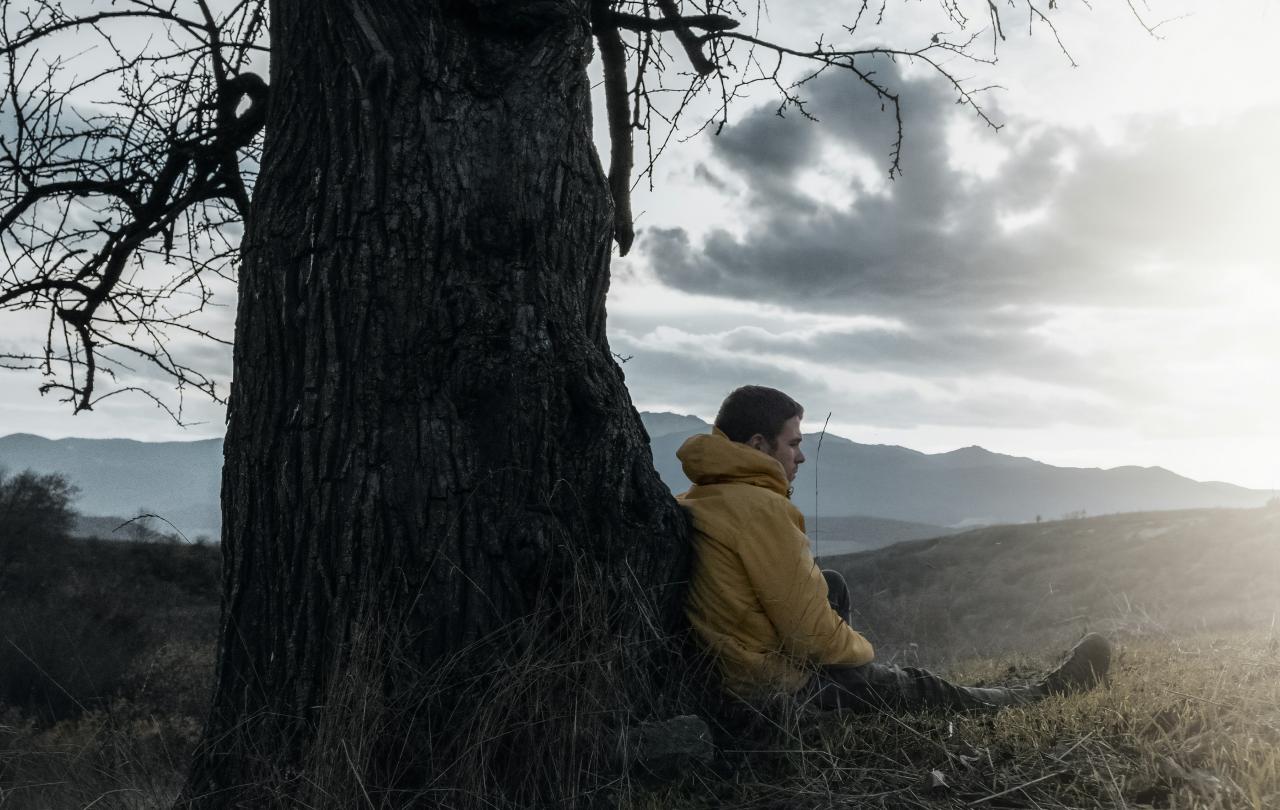
The first fortnight of the Israel/Gaza war has seen distinct phases in the West’s response. Initially, our leaders united in their resolution that Israel had a right to defend her borders. Of course she did – tell us something we don’t know.
The danger then arose, after they had projected her flag onto their government buildings and sent armaments to assist her, that we would look away as Gaza was flattened in reprisal for Hamas atrocities committed on Israeli soil.
We didn’t look away, thank God. The missile strike on the Gaza hospital (whoever caused it) marked the second phase of our horror at what was unfolding in a city under siege. It meant the US president Joe Biden arrived in Israel with a more conciliatory tone: “While you feel... rage, don’t be consumed by it.”
On his copycat visit, UK prime minister Rishi Sunak was more hawkish: “We will stand with you in solidarity… and we want you to win.” Well, not all of us, actually; he apparently hadn’t noticed, or chose to ignore, loud pro-Palestinian British demonstrators. Sunak’s foreign secretary, James Cleverly, evidently had noticed the humanitarian catastrophe unfolding in Gaza and urged “restraint”.
A scorched-earth policy in Gaza in reprisal for the massacre of families in Israel cannot be countenanced and we, in the West, should say so and, largely, are saying so.
Overall, in the past few days, Israel seemed to be grabbing global opprobrium from the jaws of western support. In a turbo-charged burst of whataboutery, Jewish commentators have been reminding us of the unspeakable horrors of the Hamas invasion that sparked the conflict.
Our respectable, mainstream media don’t need reminding. They repeat the details of Hamas’s crimes against humanity relentlessly as further harrowing details of them emerge. But the story has developed, if not moved on.
The consequent challenge is to apply moral principle to this savage international crisis. The criteria of Augustine’s “Just War” are a good place to start. One of the sanctions for waging such a war is that it is proportionate. A scorched-earth policy in Gaza in reprisal for the massacre of families in Israel cannot be countenanced and we, in the West, should say so and, largely, are saying so.
Biden said so in Israel. In doing so, he showed leadership in the best traditions of the West’s Judeo-Christian heritage. Graham Tomlin has spelt out here our urgent need for such leadership and it would be only faithful to meet that challenge.
To say we stand with Israel, as Sunak does, is an incomplete statement in this regard. It needs to be followed by vocalising what we stand for.
From a perspective of faith, the first thing to say, almost to get it out of the way, is that prayer is vital under these circumstances – it never changes an impassible God; it always, every time, changes us to be more effective agents in the world. What we call the Holy Spirit changes events through us. So our agency is as nothing if it remains unimplemented. The Christian voice needs to be articulated in action as well as word.
To say we stand with Israel, as Sunak does, is an incomplete statement in this regard. It needs to be followed by vocalising what we stand for. And, whatever that is, it can’t be the destruction of a people as the price of the defeat of its terrorist leadership.
If that were the case, the Allied advance on Berlin from the west at the end of the Second World War would have more closely resembled the horrific brutality of the Soviet advance from the east. There was a moral assumption on our part then that the German people were not to pay, beyond reparations, for the crimes of Nazism.
To apply similar moral principle to the current crisis, it’s absolutely right to defend Israel from Hamas, but it is right also to defend Palestinians from the crimes of Hamas. To fail to make such a distinction isn’t solely inhumane, it’s racist.
Gospel injunctions, in truth, can ring hollow in these circumstances. To suggest, on the Gaza border right now, that we should love our neighbours as ourselves would sound tin-eared and trite (yet it doesn’t make it any less true).
Nor is anyone likely to suggest that Israel turns its other cheek – the Christian cries out for justice as well. But we might be bold to say that the way to exact that justice is not an eye for an eye and a tooth for a tooth.
Challenges to a Christian response to the conflict are twofold. First, Christian witness is woefully diminished on the very ground on which Israeli military boots currently stand and where they are likely to march very soon.
It’s been a fluctuating historical demographic, but the Christian population across the holy lands of the Middle East has declined from about 20 per cent a century ago to just 5 per cent today. There is now less than 2 per cent of the population of Israel that is Christian. Gaza has been a hostile environment for Christians since the Hamas takeover in 2007; out of a population of 2 million, perhaps 1,000 are Christian.
This is not to suggest that Christian presence alone could change the course of Israel-Palestine armed conflicts. It didn’t prevent the Six-Day War in the 1960s, after all, when it was far larger, nor during intifadas since. But, as I have written before, the Christian quarters in Jerusalem have maintained an uneasy stability between Judaism and Islam and their decline has made the city more volatile. As a buffer to conflict, the Christian role is diminished.
The other complicating factor is Christian Zionism, a doctrine that holds that the founding of the state of Israel in 1948 is eschatological – that is, that the return of the Jewish people to the holy lands is a precursor to the “end times” and the second coming of Jesus Christ.
None of which is likely to comfort those suffering so dreadfully there. Perhaps, ultimately, we look for the holy voice in the wrong places. I don’t mean to misappropriate her faith or ethnicity, but I think of the traumatised young woman who survived the Hamas massacre at the Re’im Supernova music festival.
Asked on ITV News if she wanted revenge, she replied through her tears, quietly but firmly: “I don’t want revenge. I want peace.” There speaks the authentic voice of hope.





